Sweden is a Scandinavian nation with thousands of coastal islands and inland lakes, along with vast boreal forests and glaciated mountains. Its principal cities, eastern capital Stockholm and southwestern Gothenburg and Malmö, are all coastal. Stockholm is built on 14 islands. It has more than 50 bridges, as well as the medieval old town, Gamla Stan, royal palaces and museums such as open-air Skansen.
Sweden is part of the geographical area of Fennoscandia. The climate is in general mild for its northerly latitude due to significant maritime influence. In spite of the high latitude, Sweden often has warm continental summers, being located in between the North Atlantic, the Baltic Sea, and vast Russia. The general climate and environment vary significantly from the south and north due to the vast latitudinal difference, and much of Sweden has reliably cold and snowy winters. Southern Sweden is predominantly agricultural, while the north is heavily forested and includes a portion of the Scandinavian Mountains.
Sweden is a constitutional monarchy and a parliamentary democracy, with legislative power vested in the 349-member unicameral Riksdag. It is a unitary state, currently divided into 21 counties and 290 municipalities. Sweden maintains a Nordic social welfare system that provides universal health care and tertiary education for its citizens. It has the world’s eleventh-highest per capita income and ranks very highly in quality of life, health, education, protection of civil liberties, economic competitiveness, income equality, gender equality, prosperity and human development.
1.Vasa Museum
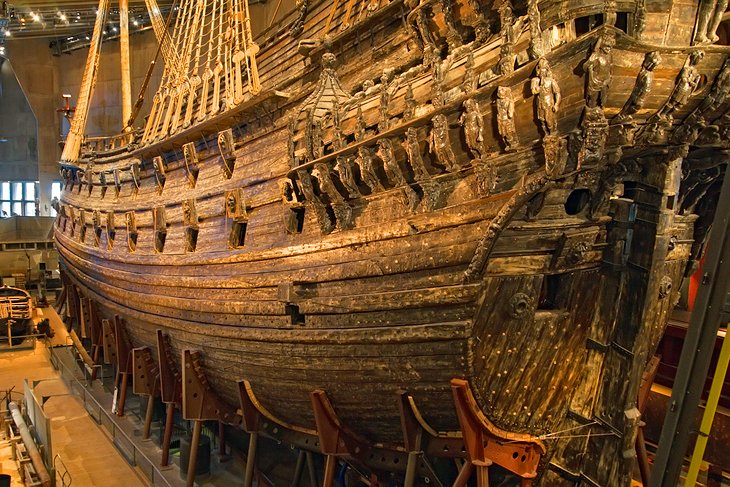
The Vasa Museum is a maritime museum in Stockholm, Sweden. Located on the island of Djurgården, the museum displays the only almost fully intact 17th-century ship that has ever been salvaged, the 64-gun warship Vasa that sank on her maiden voyage in 1628.
The Vasa Museum (Vasamuseet) in Stockholm is Sweden’s most popular museum and now attracts around a million visitors annually. More than 20 million people have visited since the museum opened in 1990, and it’s not hard to see why.
In 1628, the pride of the Swedish Imperial fleet, the 64-gun warship Vasa, sank on its maiden voyage. The ship lay below the icy waters for more than three centuries until, in 1961, an incredibly ambitious salvage operation took place. Now, visitors from across the world come to see this fascinating time capsule.
2. Skansen and Djurgården
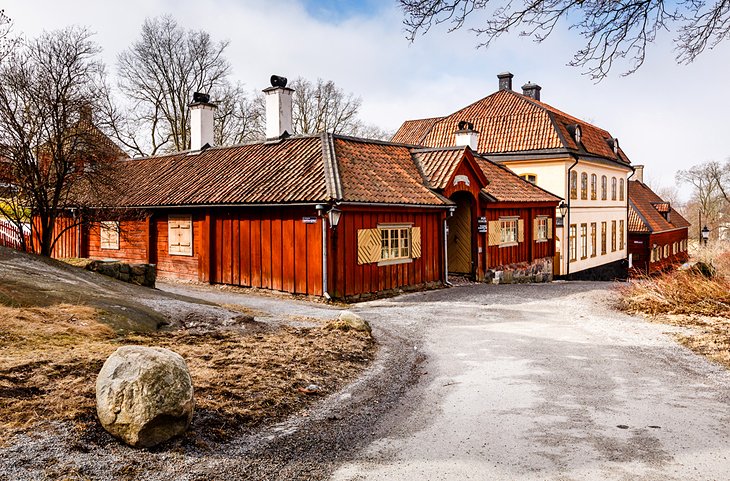
Skansen is the first open-air museum and zoo in Sweden located on the island Djurgården in Stockholm, Sweden. It was opened on 11 October 1891 by Artur Hazelius to show the way of life in the different parts of Sweden before the industrial era.
The 19th century was a period of great change throughout Europe, and Sweden was no exception. Its rural way of life was rapidly giving way to an industrialised society and many feared that the country’s many traditional customs and occupations might be lost to history. Artur Hazelius, who had previously founded the Nordic Museum on the island of Djurgården near the centre of Stockholm, was inspired by the open-air museum, founded by King Oscar II in Kristiania in 1881, when he created his open-air museum on the hill that dominates the island. Skansen became the model for other early open-air museums in Scandinavia and later ones elsewhere.
Skansen was originally a part of the Nordic Museum, but became an independent organisation in 1963. The objects within the Skansen buildings are still the property of the Nordic Museum.
Skansen, the world’s oldest open-air museum (and one of the world’s largest), is a historic village made up of houses and farmsteads from all over Sweden. Together, these impressively preserved buildings represent both rural and urban culture at various periods from 1720 to the 1960s.
Gathered here are churches, schoolhouses, manor houses, shops, mills, workers’ homes, artisan’s shops (including a book bindery, print shop, shoemaker, tinsmith, comb maker, and glassworks), a bakery, a funicular railroad, a Sami camp with reindeer, and a number of complete farmsteads.
3.Gamla Stan
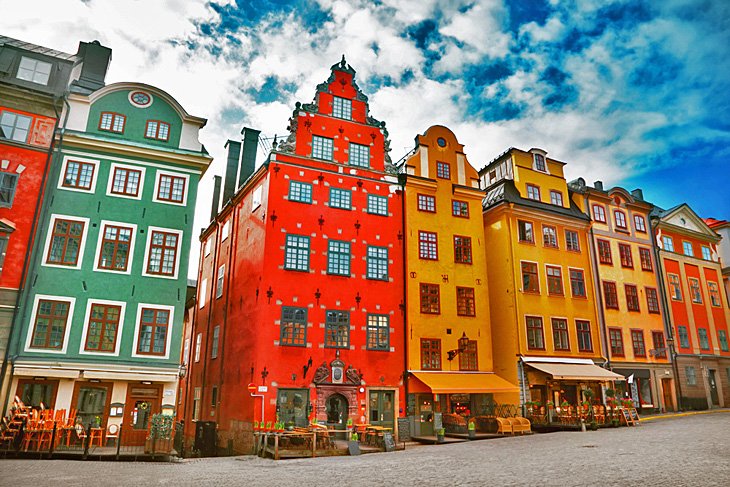
The bustling, compact island of Gamla Stan is the city’s old town, with cobbled streets and colorful 17th- and 18th-century buildings. It’s home to the medieval Storkyrkan cathedral and the Royal Palace, the king’s official residence. Stylish bistros serve New Nordic cuisine, while night spots include old-school pubs and chic cocktail bars. On adjoining Riddarholmen island, Riddarholmen Church hosts summer concerts.
The name Stockholm originally referred to Gamla Stan only, but as the city expanded, the name now also refers several suburban areas and the metro region. The name Stockholm means “log island” in Swedish. The previous capital of Sweden was located in Sigtuna. A thousand years ago Sigtuna had problems with armed gangs attacking the city. The situation became untenable and there was a need to find a new location for the capital city of Sweden. According to legend the leaders in Sigtuna then took a log of wood, cut out all the wood inside, filled it with gold, and let it float on the water. The log was floating on the water for several days and eventually hit land on the island where Gamla Stan today is located. The island was named Stockholm or log island, meaning the place where the log had hit ground. This is where they decided to found the new capital of Sweden. The island of Stockholm had the advantage that it was an island, easy to defend from armed gangs that could be thought to want to attack the city. It also had the advantage from a trade point of view, that it was situated just at the inlet of Lake Mälaren, a big lake very important to contemporary trade, from the Baltic. A sculpture symbolizing the old log is today found at Stadshuset, the Stockholm City Hall.
4. Drottningholm Palace, Lovö
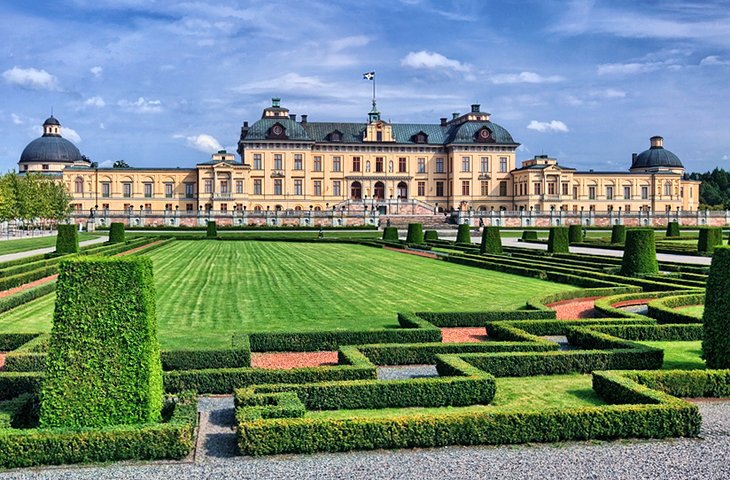
Fairy-tale Drottningholm Palace (Drottningholms slott), on the island of Lovö, is a UNESCO World Heritage Site and lies about 11 kilometers west of Stockholm city center (45 minutes by ferry). Dating from the 17th century, the palace is now the official residence of the Swedish Royal Family.
In the picturesque terraced park are bronze sculptures from Bohemia and Denmark, brought back as trophies of war. Be sure to take in the Chinese Pavilion, which dates from the late 1700s. The 18th-century Palace Theatre (Drottningholms Slottsteater) is still used for performances during the summer months. In the Theatre Museum, you can see period stage costumes and stage scenery.
The name Drottningholm (literally meaning “Queen’s islet”) came from the original renaissance building designed by Willem Boy, a stone palace built by John III of Sweden in 1580 for his queen, Catherine Jagiellon. This palace was preceded by a royal mansion called Torvesund.
The name Drottningholm (literally meaning “Queen’s islet”) came from the original renaissance building designed by Willem Boy, a stone palace built by John III of Sweden in 1580 for his queen, Catherine Jagiellon. This palace was preceded by a royal mansion called Torvesund.
The Queen Dowager Regent Hedwig Eleonora bought the castle in 1661, a year after her role as Queen of Sweden ended, but it burnt to the ground on 30 December that same year. Hedwig Eleonora engaged the architect Nicodemus Tessin the Elder to design and rebuild the castle. In 1662, work began on the reconstruction of the building. With the castle almost complete, Nicodemus died in 1681. His son Nicodemus Tessin the Younger continued his work and completed the elaborate interior designs. The Flemish sculptor Nicolaes Millich made for the great staircase and hall sculptures of the nine muses in marble, along with a series of busts of Gothic kings.In addition, he also made bust portraits of King Charles X Gustav, his wife Hedwig Eleonor and both their sons, the young King Charles XI, probably also of Magnus Gabriel De la Gardie and his wife Maria Euphrosyne, a sister of King Charles X Gustav. Millich and his assistant Burchard Precht also made decorative wood carvings in the queen dowager’s bed chamber.
5.Kiruna and the Ice Hotel, Lapland
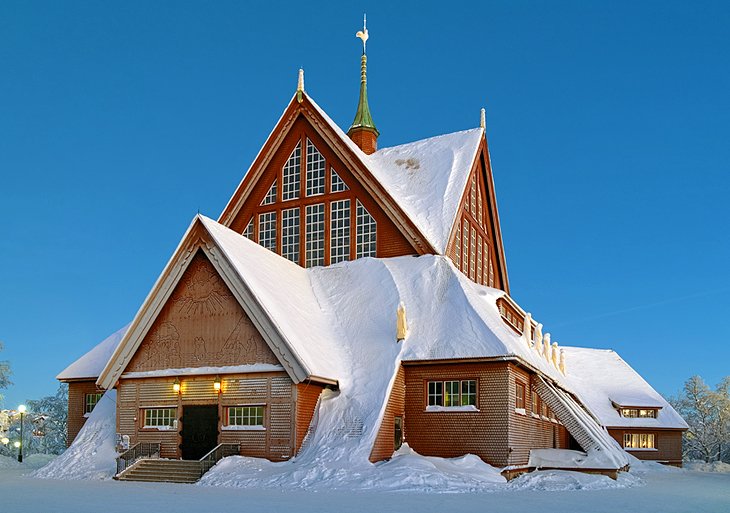
The entire hotel is made out of snow and ice blocks from the Torne River; even the glasses in the bar are made of ice. Each spring, around March, Icehotel harvests tons of ice from the frozen Torne River and stores it in a nearby production hall with room for over 900 t (990 short tons) of ice and 27,000 t (30,000 short tons) of snow. The ice is used for creating Icebar designs and ice glasses, which are used for ice sculpting classes, events and product launches all over the world while the snow is used for building a strong structure for the building. About 900 t (990 short tons) of what is left is used in the construction of the next Icehotel.
The ice suites do not have any bathroom facilities but bathrooms for guests are found in a warm building close by. There is also warm accommodation available next to the hotel. The Icehotel in Jukkasjärvi is known to be the biggest hotel of ice and snow in the world, spanning over some 6,000 square metres (64,600 sq ft). Each suite is unique and the architecture of the hotel is changed each year, as it is rebuilt from scratch. Each year, artists submit their ideas for suites, and a jury selects about 50 artists to create the church, Icebar, reception, main hall and suites. When spring comes, everything melts away and returns to the Torne River. The Icehotel only exists between December and April, and has been listed as one of the Seven Wonders of Sweden. The northern hemisphere’s aurora borealis can be seen during the winter months in the location.
6.The Göta Canal, Gothenburg to Stockholm
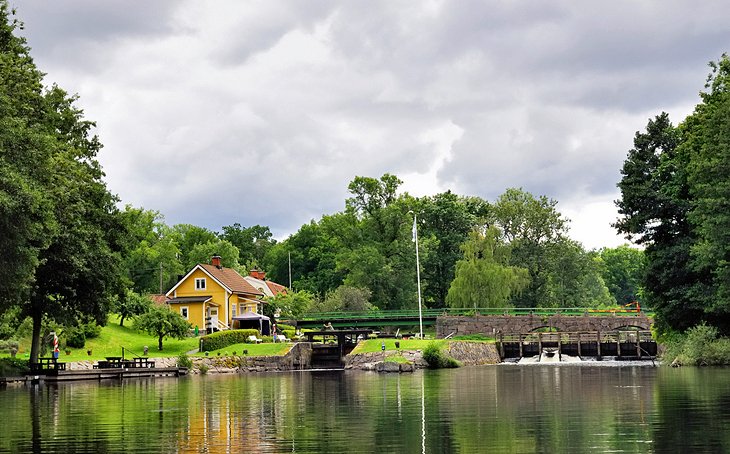
The Göta Canal is a part of a waterway 390 km (240 mi) long, linking a number of lakes and rivers to provide a route from Gothenburg (Göteborg) on the west coast to Söderköping on the Baltic Sea via the Trollhätte kanal and Göta älv river, through the large lakes Vänern and Vättern. This waterway was dubbed as Sweden’s Blue Ribbon (Swedish: Sveriges Blå Band). Contrary to the popular belief it is not correct to consider this waterway as a sort of greater Göta Canal: the Trollhätte Canal and the Göta Canal are completely separate entities.
The idea of a canal across southern Sweden was first put forward as early as 1516, by Hans Brask, the bishop of Linköping. However, it was not until the start of the 19th century that Brask’s proposals were put into action by Baltzar von Platen, a German-born former officer in the Swedish Navy. He organised the project and obtained the necessary financial and political backing. His plans attracted the enthusiastic backing of the government and the new king, Charles XIII, who saw the canal as a way of kick-starting the modernisation of Sweden. Von Platen himself extolled the modernising virtues of the canal in 1806, claiming that mining, agriculture and other industries would benefit from “a navigation way through the country.
These days the canal is primarily used as a tourist and recreational attraction. Around two million people visit the canal each year on pleasure cruises – either on own boats or on one of the many cruise ships – and related activities. The canal sometimes is ironically called the “divorce ditch” (Swedish: skilsmässodiket) because of the troubles that inexperienced couples have to endure while trying to navigate the narrow canal and the many locks by themselves.
7.Stockholm City Hall

Stockholm City Hall is the seat of Stockholm Municipality in Stockholm, Sweden. It stands on the eastern tip of Kungsholmen island, next to Riddarfjärden’s northern shore and facing the islands of Riddarholmen and Södermalm. It houses offices and conference rooms as well as ceremonial halls.
In 1907, the city council decided to build a new city hall at the former site of Eldkvarn. An architectural design competition was held, which first resulted in the selection of drafts by Ragnar Östberg, Carl Westman, Ivar Tengbom jointly with Ernst Torulf, and Carl Bergsten. After a further competition between Westman and Östberg, the latter was assigned the construction of the City Hall, while the former was asked to build Stockholm Court House. Östberg modified his original draft using elements of Westman’s design, including the tower. During construction, Östberg constantly reworked his plans, resulting in the addition of the lantern on top of the tower, and the abandonment of the blue glazed tiles in the Blue Hall.









